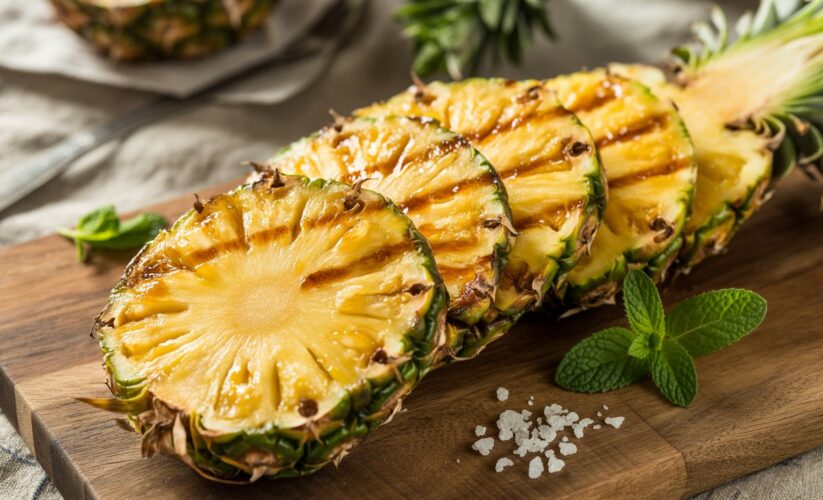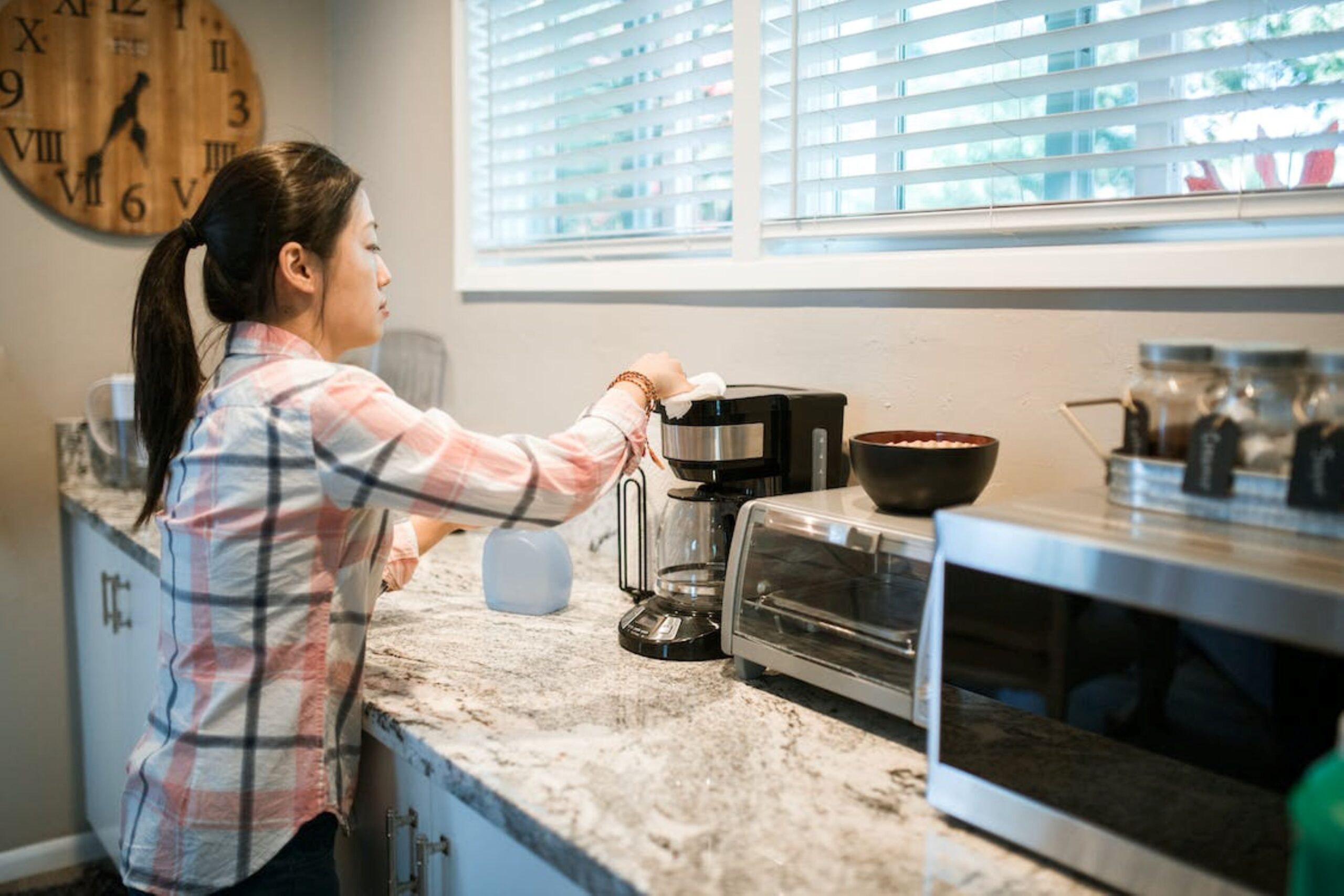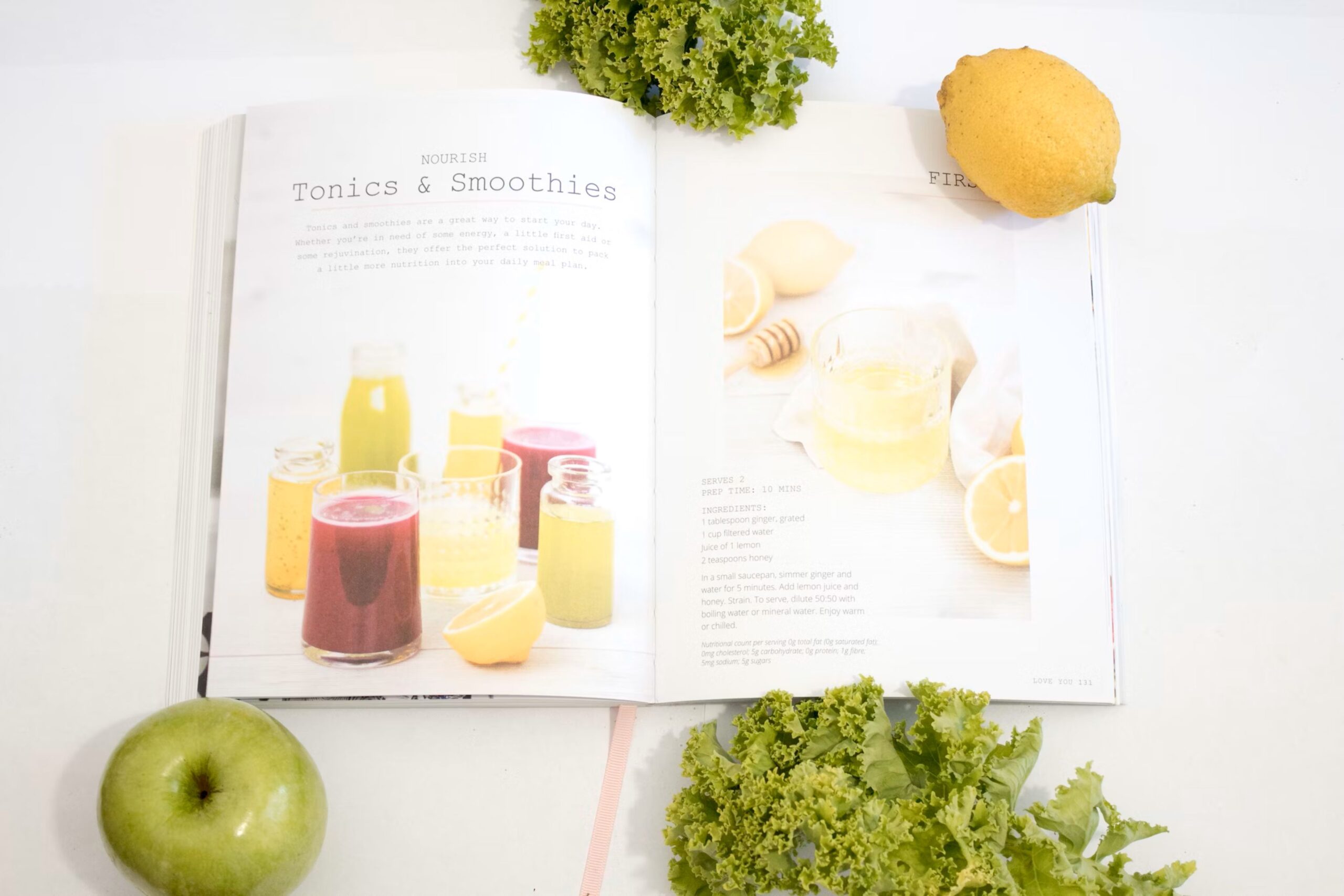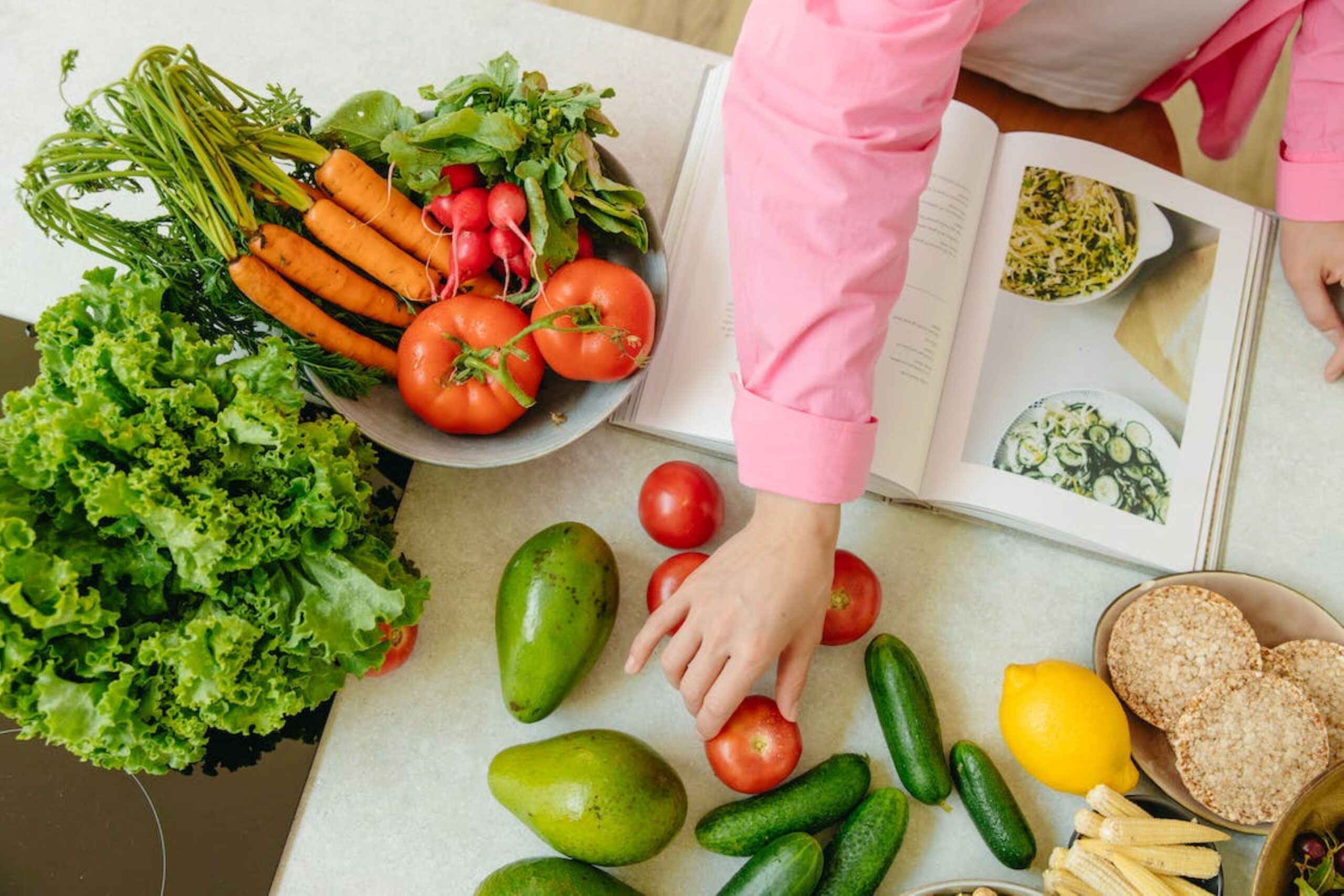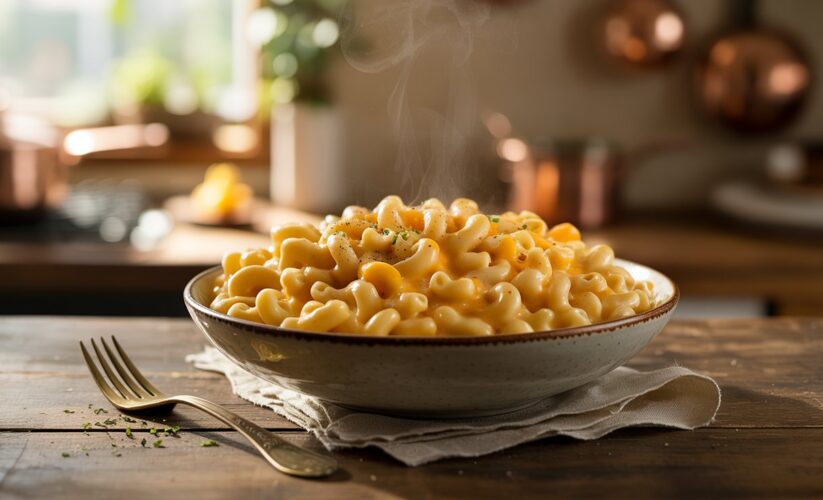
Ninja Foodi Mac & Cheese: Pressure Cook + Air Crisp
Mac and cheese stands as one of the most beloved comfort foods across households worldwide. The Ninja Foodi revolutionizes this classic dish by combining two cooking methods that deliver exceptional results: pressure cooking for perfectly tender pasta and air crisping for an irresistibly golden, crunchy topping. This innovative approach transforms traditional stovetop mac and cheese into a restaurant-quality meal that requires minimal effort and delivers maximum flavor.
The Ninja Foodi’s dual functionality eliminates the need for multiple pots and pans, making cleanup a breeze while ensuring consistent results every time. The pressure cooking function cuts cooking time significantly, while the air crisp feature adds that coveted crispy top layer that elevates the dish from ordinary to extraordinary.
Key Takeaways
- Time-efficient cooking: Pressure cooking reduces total cooking time by up to 50% compared to traditional methods
- Two textures in one dish: Creamy interior meets crispy, golden top for the perfect contrast
- One-pot convenience: No need to boil pasta separately or dirty multiple dishes
- Versatile recipe: Easily customizable with different cheeses, add-ins, and toppings
- Consistent results: Precise temperature control prevents overcooking and ensures even heating
“The beauty of pressure cooking pasta lies in its ability to infuse flavors directly into the noodles while they cook, creating a more cohesive and flavorful dish than traditional boiling methods.”
— The Culinary Institute of America
- REPLACES 14 COOKING TOOLS & APPLIANCES: This cooker replaces the need for a slow cooker, steam oven, food warmer, nonstick pot, sauté pan, cast iron skillet, saucier, steamer, saucepan, stock pot, Dutch oven, roasting pan, bread maker, and utensil.
- SEAR & SAUTÉ DIRECTLY IN THE POT: Using the bottom heating elements, you are able to sear proteins and sauté vegetables right in the cooking pot—no need to transfer to the stovetop.
- OVEN SAFE TO 500°F: Removable cooking pot is oven safe up to 500°F, so you can finish your meal in the oven for a crispy top.
- NINJA FOODI SMART XL GRILL: Updated, sleek design with the same functions & benefits. Indoor countertop Grill and Air Fryer with the Smart Cook System & Thermometer.
- SMART COOK SYSTEM & THERMOMETER: The Foodi Smart Thermometer enables you to achieve the perfect doneness, from rare to well-done with 4 protein settings & 9 customizable doneness levels. Do it at the touch of a button with no more guesswork, hassle-free.
- CYCLONIC GRILLING TECHNOLOGY: Uses 500°F of hot cyclonic air and 500°F grill grate to perfectly cook or char grill your food with char-grilled marks and delicious flavors.
- 10-IN-1 VERSATILITY Pressure cook, air fry, slow cook, steam, sous vide, yogurt, broil, bake/roast, dehydrate and sear/saute for endless meal options
- TENDERCRISP TECHNOLOGY Combines pressure cooking to lock in juices then finishes with a crispy exterior using the crisping lid for balanced texture
- FAMILY-SIZED CAPACITY 6.5-qt ceramic-coated pot holds a 5-lb chicken or 3 lbs of fries and includes a reversible broil rack for multi-layer cooking
- 2 INDEPENDENT BASKETS: The original Air Fryer with 2 independent baskets, the XL air fryer lets you cook 2 foods, 2 ways, at the same time, eliminating back-to-back cooking like a traditional single-basket air fryer.
- SMART FINISH & MATCH COOK: DualZone Technology allows you to choose between the Smart Finish feature, which unlocks cooking 2 foods 2 ways that finish at the same time, and the and a Match Cook button to easily copy settings across zones for full 8-qt capacity.
- 6-IN-1 FUNCTIONALITY: Includes 6 versatile cooking programs: Air Fry, Air Broil, Roast, Bake, Reheat, and Dehydrate. The baskets can be washed in the dishwasher or by hand.
Understanding the Ninja Foodi Method
The Ninja Foodi operates on a principle that combines pressure cooking technology with air frying capabilities. This dual-function approach makes it particularly well-suited for dishes that benefit from both moist and dry heat cooking methods. For mac and cheese, this means achieving pasta that’s perfectly cooked through without becoming mushy, while still obtaining that desirable crispy, cheesy crust on top.
Pressure cooking works by trapping steam inside a sealed chamber, which raises the boiling point of water and allows food to cook faster at higher temperatures. This method is ideal for pasta because it ensures even cooking throughout while reducing the risk of overcooking the exterior before the interior is done. The sealed environment also means that flavors concentrate rather than evaporate, resulting in more intense taste.
The air crisp function, on the other hand, circulates hot air rapidly around the food, creating a crispy exterior similar to deep frying but with minimal oil. When applied to the cheese topping of mac and cheese, this creates those golden-brown patches and slightly crunchy bits that make the dish truly special.
Essential Ingredients and Equipment
Creating exceptional Ninja Foodi mac and cheese starts with selecting quality ingredients. The pasta choice matters significantly—elbow macaroni remains the classic option, but shells, cavatappi, or penne work equally well. These shapes have nooks and crannies that capture the cheese sauce, ensuring every bite delivers maximum flavor.
Cheese selection deserves careful consideration. Sharp cheddar provides the quintessential mac and cheese flavor, while adding gruyere introduces a nutty sophistication. Monterey Jack contributes creaminess, and a touch of cream cheese ensures a silky-smooth texture. Using pre-shredded cheese is convenient, but freshly grated cheese melts more smoothly due to the absence of anti-caking agents.
The liquid component typically combines milk and broth. Whole milk creates the richest sauce, though two percent milk works acceptably. Some recipes incorporate heavy cream for extra decadence. Chicken or vegetable broth adds depth of flavor that water alone cannot provide. The ratio of liquid to pasta is critical—too much results in soupy mac and cheese, while too little risks scorching.
Butter serves multiple purposes: it prevents sticking during pressure cooking, enriches the sauce, and helps create that golden crust during air crisping. Seasonings might include mustard powder, which enhances cheese flavor without adding a distinct mustard taste, garlic powder, paprika, salt, and pepper.
For the crispy topping, panko breadcrumbs mixed with melted butter and parmesan cheese create an exceptional crust. Some variations incorporate crushed crackers or even potato chips for additional texture and flavor.
Step-by-Step Cooking Process
Preparing the Base
The cooking process begins with adding pasta to the Ninja Foodi pot along with butter, liquid, and seasonings. Unlike traditional methods, the pasta goes in uncooked—the pressure cooker handles everything. The key is ensuring the liquid just covers the pasta without excessive overflow. Stirring at this stage helps distribute the butter and prevents clumping.
Pressure Cooking Phase
Secure the pressure lid and set the valve to the sealing position. Select the pressure cook function and set the timer—typically three to four minutes for al dente pasta, depending on the pasta shape and size. Thicker pasta shapes require slightly longer cooking times. The Ninja Foodi will take several minutes to come to pressure before the actual cooking countdown begins.
This pressurization period is normal and necessary for the cooking process to work correctly. Once pressure is reached, the timer counts down. When complete, allow a quick release by carefully turning the valve to the venting position. Steam will escape rapidly, so keeping hands and face away from the valve is essential for safety.
Creating the Cheese Sauce
After releasing pressure and removing the lid, the pasta will appear slightly undercooked and swimming in liquid—this is expected. Switch to the sauté function on low heat and begin adding cheese gradually. Incorporating cheese in batches while stirring constantly prevents clumping and ensures smooth melting. The residual heat and continued gentle cooking help the cheese incorporate fully.
As the cheese melts, the sauce thickens considerably. If it becomes too thick, splashing in additional milk brings it back to the desired consistency. At this stage, taste and adjust seasonings as needed. The sauce should be slightly looser than the final desired consistency, as it will thicken further during the air crisp phase and upon standing.
Air Crisping for the Perfect Finish
Spread the breadcrumb topping evenly across the surface of the mac and cheese. Replace the pressure lid with the crisping lid, which allows hot air to circulate. Set the air crisp function to 400°F and cook for eight to twelve minutes, checking occasionally for desired browning. The topping should turn golden brown with darker patches that provide visual appeal and concentrated flavor.
Different Ninja Foodi models may require slight adjustments to timing and temperature. Watching the topping during the final minutes prevents burning. If browning occurs too quickly on the edges while the center remains pale, briefly covering the edges with aluminum foil allows the center to catch up.
Customization and Variations
The basic Ninja Foodi mac and cheese serves as a canvas for countless variations. Adding proteins transforms it into a complete meal—diced ham, crispy bacon, shredded rotisserie chicken, or sautéed shrimp integrate seamlessly. For vegetarian versions, roasted vegetables like broccoli, cauliflower, or butternut squash add nutrition and flavor complexity.
Cheese combinations offer endless experimentation opportunities. A three-cheese blend of sharp cheddar, smoked gouda, and fontina creates a sophisticated flavor profile. For spicy versions, pepper jack cheese or a dash of cayenne pepper provides heat. Blue cheese or gorgonzola appeals to adventurous palates.
Incorporating different toppings changes the character entirely. Crushed Ritz crackers deliver buttery richness, while cornflakes provide extra crunch. Mixing herbs into the breadcrumb topping—such as parsley, thyme, or rosemary—adds aromatic notes. Some variations include crispy fried onions or even crushed hot Cheetos for a playful twist.
For those seeking healthier alternatives, whole wheat pasta increases fiber content, while cauliflower florets mixed with pasta reduces carbohydrates. Greek yogurt can partially replace cream cheese for added protein with less fat. Nutritional yeast contributes a cheesy flavor while keeping the dish dairy-free.
Troubleshooting Common Issues
Even with careful preparation, challenges may arise. If the mac and cheese turns out too soupy, several factors might be responsible. Using too much liquid is the most common culprit—measuring carefully prevents this issue. If caught early, continuing to cook on sauté mode with the lid off allows excess liquid to evaporate.
Pasta that’s too firm suggests insufficient cooking time during the pressure phase. Different pasta brands and shapes vary in density, requiring timing adjustments. Adding one or two minutes to the pressure cooking time usually resolves this issue. Conversely, mushy pasta results from overcooking—natural release rather than quick release can lead to this problem, as does excessive pressure cooking time.
A grainy texture in the cheese sauce indicates that the cheese separated or cooked at too high a temperature. Adding cheese while the mixture is too hot or cooking on high sauté heat causes this. The solution involves removing the pot from heat, allowing it to cool slightly, then stirring in cheese more gradually. A small amount of cream cheese or sodium citrate can help smooth out grainy sauce.
If the bottom of the pot shows signs of scorching, insufficient liquid was present, or the pasta settled and stuck during pressure cooking. Stirring before sealing the lid helps prevent this. Using the suggested liquid ratios and ensuring pasta is submerged also minimizes this risk. A quick clean release rather than extended natural release reduces the chance of scorching as well.
When the topping browns unevenly or too quickly, the air crisp temperature may be too high, or the breadcrumb layer may be uneven. Lowering the temperature to 375°F and extending the time slightly produces more even results. Ensuring the topping layer is uniform in thickness also helps achieve consistent browning.
Storage and Reheating
Properly stored Ninja Foodi mac and cheese maintains quality for three to four days in the refrigerator. Transfer cooled mac and cheese to an airtight container, pressing plastic wrap directly onto the surface to prevent skin formation. The topping will soften during storage, but this is unavoidable.
Reheating requires a gentle approach to prevent drying out. The microwave works for individual portions—add a splash of milk, cover loosely, and heat in 30-second intervals while stirring. For oven reheating, transfer to a baking dish, add milk to loosen the sauce, cover with foil, and bake at 350°F until heated through. Removing the foil for the final few minutes can help re-crisp the topping.
The Ninja Foodi itself can reheat leftovers effectively. Place mac and cheese in the pot, add a small amount of milk, and use the sauté function on low, stirring frequently until heated through. For a fresh crispy top, add new breadcrumbs and use the air crisp function briefly.
Freezing mac and cheese is possible but affects texture. The sauce may separate slightly upon thawing and reheating. To freeze, portion into freezer-safe containers, leaving space for expansion. Freeze for up to two months. Thaw overnight in the refrigerator before reheating. Adding fresh cheese during reheating helps restore creaminess.
Nutritional Considerations
Traditional mac and cheese is inherently rich, with significant amounts of calories, fat, and sodium. A typical serving contains 400-500 calories, 20-25 grams of fat, and 600-800 milligrams of sodium. However, several modifications can make the dish more nutritious without sacrificing too much flavor.
Reducing the cheese amount slightly while increasing the proportion of milk decreases fat and calories. Using reduced-fat cheese saves additional calories, though it may impact texture. Incorporating vegetables boosts fiber, vitamins, and minerals while adding volume that reduces the percentage of high-calorie ingredients per serving.
Whole grain pasta increases fiber content substantially, promoting better digestion and sustained energy. Adding protein through lean chicken breast or turkey bacon creates a more balanced meal. Using low-sodium broth and reducing added salt helps control sodium levels, particularly important for those monitoring blood pressure.
For those with dietary restrictions, adaptations are possible. Dairy-free versions use plant-based milk and vegan cheese alternatives. Gluten-free pasta works perfectly with the pressure cooking method, though cooking times may need adjustment. Reducing or eliminating the breadcrumb topping accommodates those avoiding gluten entirely.
Serving Suggestions and Pairings
Ninja Foodi mac and cheese shines as a main course but also serves wonderfully as a side dish. As a main, pairing it with a crisp green salad balances the richness. A simple arugula salad with lemon vinaigrette cuts through the cheese’s heaviness. Roasted vegetables like green beans, asparagus, or Brussels sprouts provide textural contrast and nutritional balance.
For casual gatherings, serving mac and cheese bar-style allows guests to customize their portions with various toppings: crumbled bacon, diced jalapeños, caramelized onions, or fresh herbs. This interactive approach suits parties and potlucks perfectly.
As a side dish, mac and cheese complements grilled meats, barbecue, and roasted chicken beautifully. It’s equally at home at summer cookouts and winter holiday meals. The comfort food nature makes it appropriate for occasions ranging from casual family dinners to more formal gatherings.
Beverage pairings depend on the occasion. For adults, a crisp white wine like Chardonnay or Sauvignon Blanc balances the richness. Lighter beers or hard ciders also pair nicely. For family meals, lemonade, iced tea, or sparkling water with citrus provide refreshing contrasts.
Time-Saving Tips and Meal Prep
Preparing components ahead streamlines the cooking process significantly. Grating cheese in advance and storing it in airtight containers saves time on busy evenings. Preparing the breadcrumb topping ahead works equally well—store in a sealed bag at room temperature for up to a week.
For true meal prep, cooking the mac and cheese completely, then storing in individual portions, creates ready-to-reheat meals for the week. Portioning before refrigerating makes grabbing lunch or dinner incredibly convenient. Adding the breadcrumb topping fresh during reheating provides better texture than including it initially.
Batch cooking takes advantage of the Ninja Foodi’s capacity. Making a double batch costs little extra time and provides leftovers or freezer meals for future weeks. Varying the cheese combinations or add-ins between batches creates variety without additional effort.
Shopping strategically reduces costs without compromising quality. Buying cheese blocks rather than pre-shredded saves money and improves texture. Purchasing pasta in bulk when on sale provides pantry staples at lower costs. Generic or store-brand ingredients often perform identically to name brands in this recipe.
Conclusion
The Ninja Foodi transforms traditional mac and cheese into an elevated dish that delivers both convenience and exceptional results. By combining pressure cooking and air crisping, this method achieves the ideal contrast between creamy, cheesy interior and crispy, golden topping that makes the dish irresistible. The one-pot approach simplifies both cooking and cleanup, while the hands-off nature of pressure cooking allows attention to other tasks.
Whether preparing a quick weeknight dinner, contributing to a potluck, or serving comfort food to family and friends, this Ninja Foodi mac and cheese recipe delivers consistently excellent results. The versatility accommodates countless variations, dietary modifications, and personal preferences, ensuring that everyone can enjoy a version suited to their tastes.
Mastering this technique opens doors to experimenting with other pasta dishes in the Ninja Foodi, as the principles apply broadly. The confidence gained from perfecting mac and cheese translates to successfully pressure cooking and air crisping numerous other meals.
Frequently Asked Questions
Can regular pasta be substituted with different shapes or sizes?
Absolutely—most pasta shapes work well with this method, though cooking times may require adjustment. Smaller shapes like ditalini or orzo need reduced pressure cooking time (2-3 minutes), while larger shapes like rigatoni or penne may need an additional minute. The key is ensuring all pasta pieces are similar in size for even cooking. Avoid very delicate pasta like angel hair, as it tends to overcook easily under pressure.
What if the Ninja Foodi displays a “burn” warning during pressure cooking?
This warning indicates that the bottom of the pot is too hot, usually from insufficient liquid or uneven distribution. If this occurs before pressurization completes, release pressure if possible, open the lid, and check the contents. Scrape any stuck pasta from the bottom, add a small amount of liquid, stir thoroughly, and restart. To prevent this, always ensure pasta is fully submerged and stirred before sealing. Using the recommended liquid ratios prevents most burn warnings.
How can the recipe be adjusted for a smaller or larger batch?
The Ninja Foodi’s capacity determines maximum batch size—typically 4-6 servings comfortably. For smaller batches, reduce all ingredients proportionally while maintaining the liquid-to-pasta ratio. Pressure cooking time remains largely the same regardless of quantity. For larger batches approaching maximum capacity, add 1-2 minutes to pressure cooking time and ensure adequate clearance below the maximum fill line to prevent overflow during pressurization.
Is it necessary to use both the pressure cook and air crisp functions?
While both functions create the signature texture of this dish, either can be used independently if needed. Pressure cooking alone produces creamy mac and cheese without the crispy topping—simply skip the breadcrumbs and air crisping step. Alternatively, cook pasta separately and use only the air crisp function for finishing. However, using both functions maximizes the Ninja Foodi’s capabilities and produces superior results compared to using just one method.
What’s the best way to prevent the cheese sauce from becoming too thick or too thin?
Achieving proper sauce consistency involves monitoring liquid ratios and cheese melting technique. If the sauce becomes too thick after adding cheese, stir in milk one tablespoon at a time until reaching desired consistency. If too thin, continue cooking on sauté mode with the lid off, allowing excess moisture to evaporate. Remember that the sauce thickens as it cools, so slightly thinner consistency while hot is ideal. Using full-fat dairy products also helps maintain smooth, creamy texture throughout.
Last update on 2025-11-28 / Affiliate links / Images from Amazon Product Advertising API
*We may earn a commission for purchases made using our links. Please see our disclosure to learn more.






